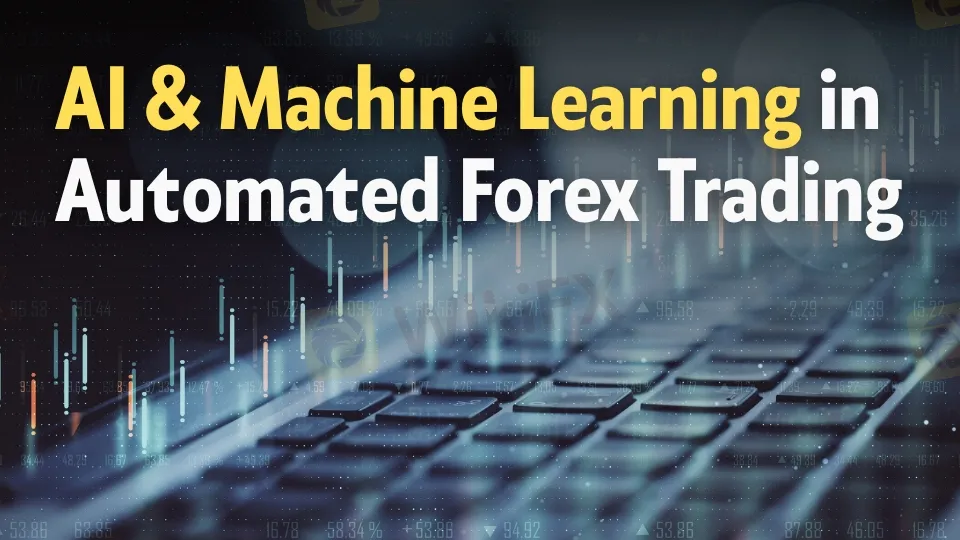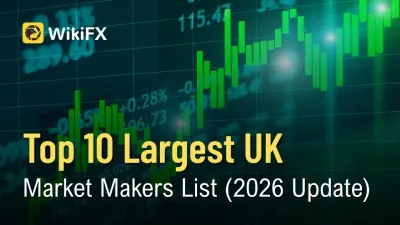Abstract:Discover how AI and machine learning are transforming forex trading by enhancing data processing, improving forecasting, and providing emotion-free, automated strategies.

The foreign exchange market—abbreviated as forex or FX—is the worlds largest and most liquid financial market, teeming with opportunity for both individual traders and institutional giants. Over recent years, a transformative wave has swept through this vibrant ecosystem: the integration of artificial intelligence (AI) and machine learning (ML) into automated forex trading. Gone are the days when currency trading was the exclusive domain of eagle-eyed analysts glued to news tickers and charts. Today, smart algorithms and data-driven decision processes are reshaping how forex is traded, leveling the playing field and amplifying the potential for profit.
Key Benefits of AI in Forex Trading
Deploying AI in the forex landscape has rewritten whats possible for traders. Below are some of the most pronounced advantages:
1. Enhanced Data Processing and Insight
Forex markets churn out massive amounts of data every second, from price fluctuations and order volumes to macroeconomic indicators. AI systems can ingest, process, and interpret this tidal wave of information in real time, enabling traders to spot trends and anomalies undetectable to the human eye. This not only supports smarter trading decisions but also speeds up the entire process, often the difference between capitalizing on opportunity or missing out.
2. Accurate Forecasting and Pattern Recognition
Machine learning models analyze historical and real-time data, identifying subtle market patterns and correlations. These insights can be used to forecast currency movements with remarkable precision, helping traders fine-tune entries and exits for increased profitability.
3. Emotion-Free, Automated Trading
While human intuition has its place, trading psychology is fraught with pitfalls. Fear, greed, and fatigue can all skew judgment. AI-powered automated systems eliminate the emotion factor, executing trades based strictly on predefined criteria and market data—co, consistently and without bias, even in volatile conditions.
4. 24/7 Market Monitoring
The forex market operates nonstop, spanning continents and time zones. Traders cannot remain vigilant around the clock, but AI bots can. These algorithms scan multiple pairs and time frames in real time, ensuring no viable trade opportunity slips through the cracks.
5. Greater Accessibility and Scalability
AI democratizes sophisticated trading strategies that, not so long ago, were only available to institutional players. Today, user-friendly AI-driven platforms make advanced strategies accessible to newcomers and seasoned pros alike, reducing the learning curve and enabling traders to handle more currency pairs simultaneously.
6. Advanced Risk Management
Evaluating and managing risk is critical in forex. AI systems excel at optimizing position sizes, setting stop-loss orders, and continuously monitoring portfolio exposure based on real-time data. This vigilance helps protect traders from catastrophic losses and sharpens overall risk/reward management.
AIs Key Benefits in Forex Trading

The Role of Machine Learning Algorithms
At the heart of AI-powered forex trading are machine learning algorithms. Rather than following rigid, pre-programmed rules, these algorithms learn from data, improving their performance over time as they process more information.
Popular ML Techniques in Forex Trading:
- Recurrent Neural Networks (RNNs): Excel at time-series data, ideal for forecasting currency trends by analyzing sequences of historical price movements.
- Long Short-Term Memory (LSTM): Specialized RNNs capable of recognizing long-term dependencies in data for deeper insight into forex trends.
- Support Vector Machines (SVM): Effective for classifying bullish or bearish trends in complex datasets.
- Random Forests: Ensemble models that combine many decision trees to improve predictive accuracy and reduce the risk of overfitting.
- Natural Language Processing (NLP): Scans news articles, economic reports, and social media for shifts in sentiment, often providing a leading edge in market prediction.
Machine learning models thrive on diverse, high-quality data, such as price quotes, trading volumes, economic indicators, and news sentiment. Once trained, their ability to detect nuanced patterns, adjust to new market regimes, and adapt trading strategies in real time gives traders a formidable edge.
Challenges and Risks of Automated Forex Systems
AI and ML offer substantial benefits, but they also introduce new categories of risk and complexity.
1. Model Overfitting and Data Dependency
AI algorithms can become “over-optimized”—tailored too precisely to historical data. While they may perform perfectly in backtests, their predictive power may crumble in volatile or unprecedented market conditions. Markets are influenced by unexpected events (geopolitical turmoil, flash crashes) that no past dataset could wholly anticipate.
2. Technical and Systemic Vulnerabilities
Automated trading depends on flawless hardware, software, and network connectivity. Technical glitches or even minor programming errors can lead to significant losses. Algorithmic trading platforms must be monitored and maintained to avoid costly errors from unforeseen system failures.
3. Lack of Oversight and Transparency
Many automated strategies use complex, multi-layered algorithms that can become “black boxes.” Traders may struggle to interpret or debug why a certain trade was placed, undermining trust and making risk management more difficult.
4. Market Impact and Flash Events
The rise of high-frequency and algorithmic trading can amplify short-term volatility, especially during periods of market stress. In some cases, trading bots have been implicated in sudden price dislocations that ripple through the market, impacting all participants.
5. Regulatory and Ethical Concerns
AI can be misused for market manipulation, front-running, or exploiting unintended market microstructures. Balancing innovation with effective regulation is an ongoing challenge for global market authorities.
How AI is Transforming Market Analysis and Trading Strategies
The fusion of AI with forex analysis is arguably its most revolutionary contribution. Heres how the landscape has changed:
Advanced Pattern Detection
AI models process multi-dimensional data—from historical prices and chart patterns to news sentiment and social media mood—in milliseconds. This allows for a broader, more contextual market view, leading to sharper timing and greater confidence in trades.
New Analytical Frontiers: Sentiment and Predictive Signals
- Sentiment analysis using NLP mining real-time news, tweets, and financial releases, quantifies market psychology—something previously left to gut feeling.
- Predictive analytics synthesizes live data streams with historical trends to recognize shifts in momentum before they become apparent to manual analysts.
Backtesting and Continuous Improvement
Modern AI trading systems rigorously backtest potential strategies, refining and evolving before risking capital in the real market. Continuous inbound data lets these models auto-improve, ensuring their tactics stay calibrated to the latest market regimes.
Adapting to Volatility
Automated systems excel at recognizing and responding to volatility spikes—continuous recalibration means strategies adjust in seconds, not hours or days.
Future Trends in AI-Driven Forex Trading
The coming years signal a bold evolution for AI-powered forex trading:
1. More Personalized Trading Assistants
As AI systems gather data on individual trader habits and risk profiles, we will see tailored AI assistants that design and execute bespoke strategies for each user, much like having a digital trading partner.
2. Integration with Blockchain and Other Technologies
AI is increasingly interfacing with blockchain to enable safer transactions, real-time compliance, and better anti-fraud monitoring. Smart contracts and decentralized ledgers provide both transparency and transactional speed.
3. Accessibility and Democratization
AI toolkits and affordable platforms will invite more retail traders to harness institutional-grade strategies, lowering the knowledge and capital barrier to entry.
4. Enhanced Risk Mitigation and Ethical Oversight
Expect new systems to not only predict market moves but proactively flag outsized risks and facilitate compliance, all while navigating an evolving regulatory landscape.
5. Quantum Computing and Multimodal AI
While still emerging, quantum computing promises a step-change in pattern recognition and speed. Multimodal AI—fusing voice, text, and market data—may generate even richer trading signals and analytics in the future.
Conclusion: The New Era of Forex
Automated forex trading has leapfrogged into a new epoch, driven by AI and machine learning. These technologies bestow unprecedented analytical power, speed, and discipline, transforming not just how trades are executed but how markets are understood. However, just as the potential for reward grows, so too does the need for vigilance. Traders must remain diligent, balancing innovation with risk management and ethical awareness, as they navigate the future of AI-driven forex.
As algorithms become smarter, faster, and more integrated into all aspects of trading, one thing is clear: the combination of human judgment and machine intelligence is the new gold standard for success in our ever-accelerating global currency markets.











